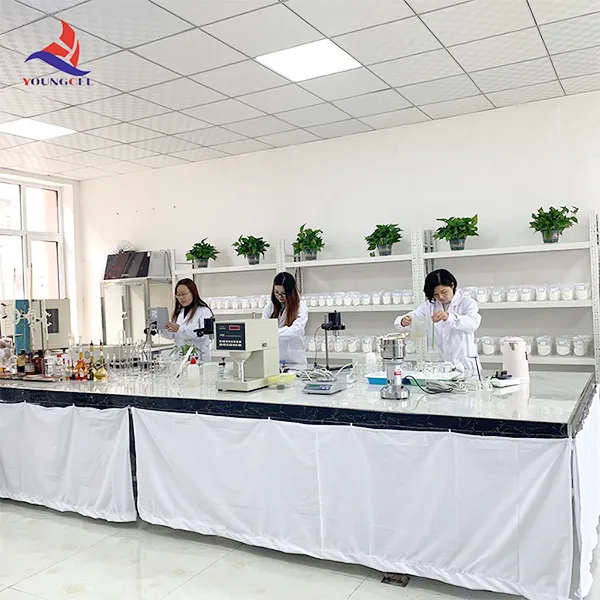Understanding Hydroxypropyl Methylcellulose (HPMC) Applications and Benefits
Hydroxypropyl Methylcellulose (HPMC) is a synthetic polymer derived from cellulose, known for its versatile properties and wide-ranging applications across various industries, including pharmaceuticals, food, construction, and personal care. This article explores the composition, properties, and multifaceted uses of HPMC, highlighting its significance in modern technology and daily life.
Composition and Properties of HPMC
HPMC is created through the chemical modification of cellulose, a natural polymer found in the cell walls of plants. The process involves etherification, where propylene oxide and methyl chloride react with cellulose to form hydroxypropyl and methyl groups. This modification enhances the solubility of cellulose in water, producing HPMC as a white, odorless powder that is non-toxic and biodegradable.
One of the most remarkable properties of HPMC is its ability to retain water, which is crucial for various applications. Additionally, HPMC is characterized by its film-forming capability, viscosity, and stability under varying pH levels. These properties make it a preferred choice in formulations where controlled release, texture, and moisture retention are essential.
Pharmaceutical Applications
In the pharmaceutical industry, HPMC serves multiple purposes. It is widely used as an excipient in tablet formulations, where it helps in controlling the release of active pharmaceutical ingredients (APIs). By adjusting the concentration of HPMC, formulators can create immediate-release, sustained-release, or controlled-release dosage forms, allowing for better therapeutic outcomes.
HPMC is also utilized in the production of capsules and as a thickening agent in liquid formulations. Its biocompatibility ensures that it can be safely ingested, and its gel-forming properties enhance the stability of suspensions. Moreover, HPMC is a vital component in ophthalmic formulations, aiding in viscosity and moisture retention, which are critical for eye health.
hydroxypropyl methyl cellulos hpmc

Food Industry Uses
HPMC has garnered attention in the food industry, primarily as a food additive. It acts as a thickener, emulsifier, and stabilizer, improving the texture and consistency of various food products. Commonly found in sauces, dressings, and baked goods, HPMC enhances the mouthfeel and helps to maintain moisture, prolonging shelf life.
Moreover, HPMC is increasingly utilized in gluten-free and low-calorie food products as a binding agent. It mimics the texture and structure that gluten provides in traditional recipes, allowing food manufacturers to create appealing options for those with dietary restrictions. This adaptability contributes to the growing demand for HPMC in the commercial food sector.
Construction and Other Industrial Applications
In the construction industry, HPMC is appreciated for its water-retention properties, which contribute to the performance of cement, mortar, and adhesive formulations. Its ability to enhance the workability and open time of these materials is invaluable, especially in complex construction projects. The inclusion of HPMC in wall putties and tile adhesives ensures strong adhesion and durability, making it a staple in construction chemistry.
Additionally, HPMC finds applications in personal care and cosmetic products. It is used in formulations of shampoos, lotions, and creams, where it plays a role in thickening, stabilizing, and emulsifying. Its non-irritating nature makes it suitable for sensitive skin formulations, further cementing its position in the cosmetics industry.
Conclusion
Hydroxypropyl Methylcellulose (HPMC) is a versatile polymer that plays a crucial role in a multitude of industries. Its unique properties—such as water retention, emulsification, and film-forming—make it an invaluable ingredient in pharmaceuticals, food products, construction materials, and personal care items. As industries continue to evolve and seek innovative solutions, HPMC remains at the forefront, offering reliable performance and adaptability. With ongoing research and development, the potential applications of HPMC are likely to expand, further solidifying its importance in enhancing product formulations and improving consumer experiences.
-
Rdp that The Revolutionary Polymer Powder Transforming Modern Construction MaterialsNewsAug.11,2025
-
Hpmc Powder that Versatile Additive for Detergents and Personal CareNewsAug.11,2025
-
Hpmc Hydroxypropyl Methylcellulose that Essential Building Material Additive from Shijiazhuang Gaocheng YongfengNewsAug.11,2025
-
Hydroxypropyl Methyl Cellulos Hpmc that Essential for Construction ApplicationsNewsAug.11,2025
-
Mhec Powder that Revolutionizing Construction Chemistry with Cellulose Ether SolutionsNewsAug.11,2025
-
Industri Hpmc that The Global Backbone of Advanced ConstructionNewsAug.11,2025




